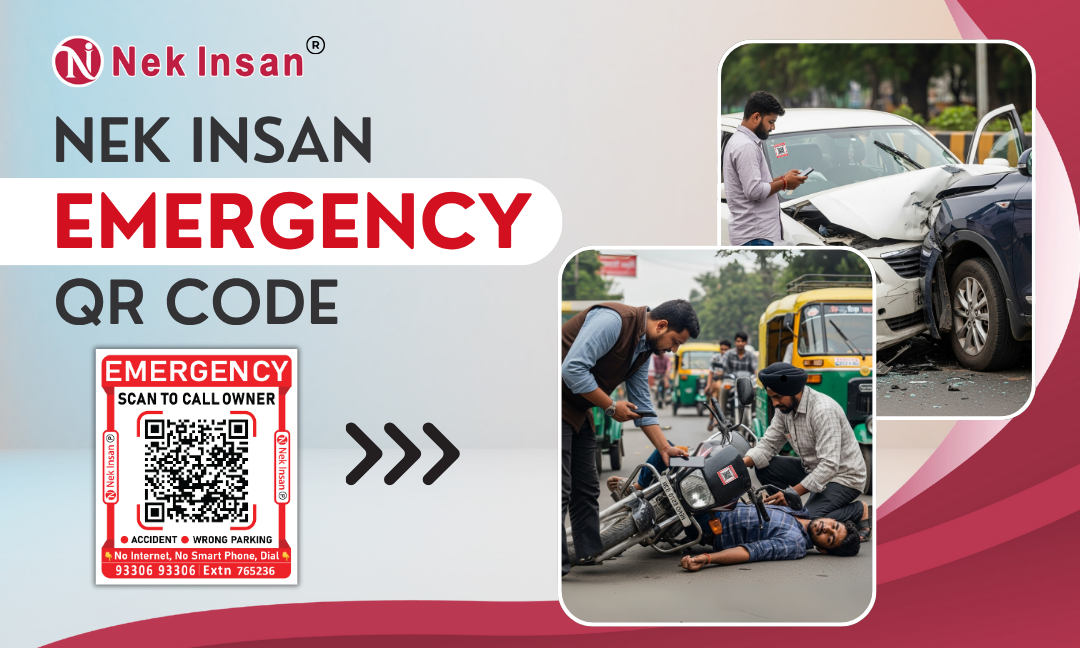
NekInsan Emergency QR Code
13 hours, 28 minutes
Search to learn about new product features, the latest technology and updates

Views: 32 | Updated: 13 hours, 28 minutes ago
While they don't explicitly market their QR codes as "medical emergency QR codes" in the same way some dedicated medical alert services do, their products incorporate features that are highly relevant for emergencies, including those with a medical component.
NekInsan's Approach to Emergency QR Codes:
NekInsan's Emergency QR codes are designed to connect individuals in an emergency with their pre-registered emergency contacts. The system focuses on:
Vehicle Safety (Car/Bike Safety QR): If a vehicle with a NekInsan QR sticker is involved in an accident, a bystander, police, or ambulance driver can scan the QR code. This action triggers an alert to the vehicle owner and their emergency contacts, including:
Photos/videos of the accident site (captured by the scanner).
Date, time, and location of the scan.
An immediate call connection to the emergency contacts (using a masked/virtual number to protect privacy).
A siren alert on the emergency contacts' phones, even if locked.
A "Call Back" button for the emergency contacts to connect with the scanner.
After the call, a pop-up appears on the scanner's phone with emergency helplines (Police, Ambulance, Fire, NHAI).
Child Safety QR Badges: These are designed for children to wear. If a child is lost, a person can scan the badge. This sends an alert with photo/video and location to the child's parents/guardians, along with a virtual call connection. This can be crucial in a medical emergency if a child is found unconscious or unwell.
Key Safety QR Tags: If keys with a NekInsan tag are lost, the finder can scan the QR code. An alert with photo/video and location is sent to the key owner, enabling them to connect and retrieve their keys. While not directly medical, retrieving keys quickly can be important in an emergency if access to a home or vehicle is needed for medical supplies or transportation.
Mobile Safety QR Stickers: These can be attached to valuables like mobile phones, laptops, etc. If lost, scanning the QR code connects the finder to the owner.
Relevance to Medical Emergencies:
While NekIsan's primary focus seems to be on vehicle accidents and lost items/persons, the underlying technology and features are highly beneficial in a medical emergency:
Rapid Contact: The immediate call connection and siren alerts to emergency contacts are critical if an individual is incapacitated due to a medical event (e.g., heart attack, stroke, diabetic coma). This allows family or friends to be quickly informed.
Location Sharing: The automatic sharing of the scan location (date, time, and GPS) is vital for first responders and family members to pinpoint the exact location of the person in distress.
Photo/Video Context: While designed for accident scenes, the ability for the scanner to send photos/videos could potentially provide visual context of the person's condition to emergency contacts, which might assist in guiding initial actions.
Emergency Helpline Access: The pop-up with emergency helplines for the scanner is a direct benefit for initiating professional medical assistance.
Data Privacy: Nekinsan emphasizes 100% data privacy with masked calls, which is a good feature for personal safety.
In summary:
NekInsan's Emergency QR codes are more about facilitating rapid communication and location sharing with your trusted contacts in various emergency scenarios, including accidents and lost persons. While they don't function as a direct medical information repository in the same way as some dedicated medical alert services, their ability to quickly connect a good Samaritan or first responder with your emergency contacts is a significant asset in any emergency, including those requiring immediate medical attention.
If you are looking for a system that provides instant access to your detailed medical history for first responders upon scanning, you might need to consider dedicated medical alert systems that explicitly offer that feature, or explore how you can integrate a link to such information within a QR code you generate yourself (with appropriate security and privacy considerations).
